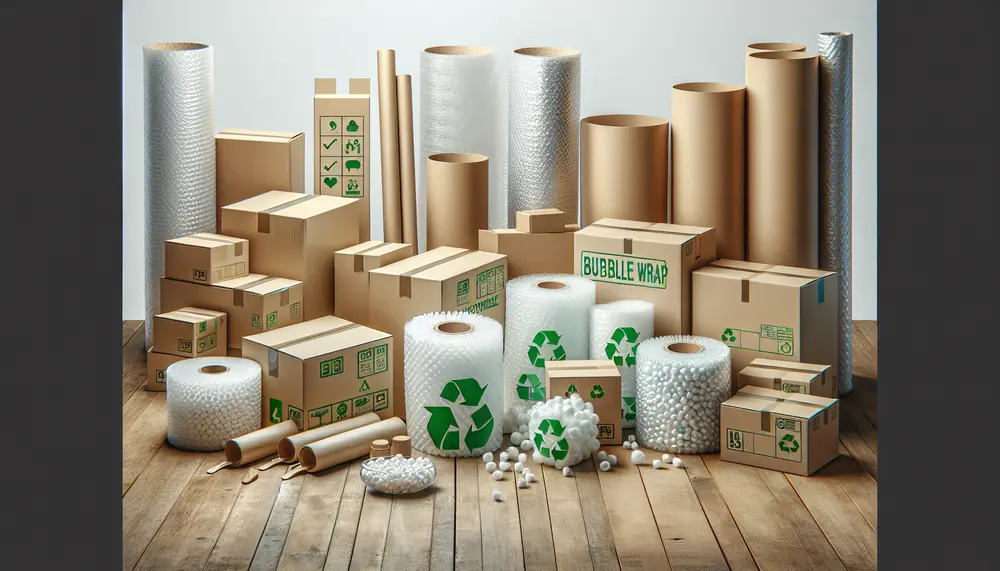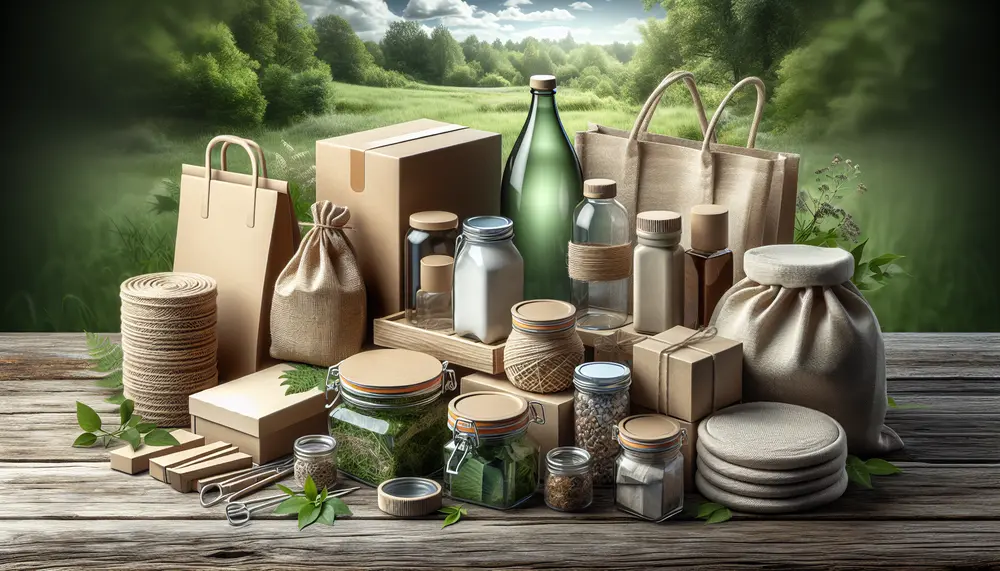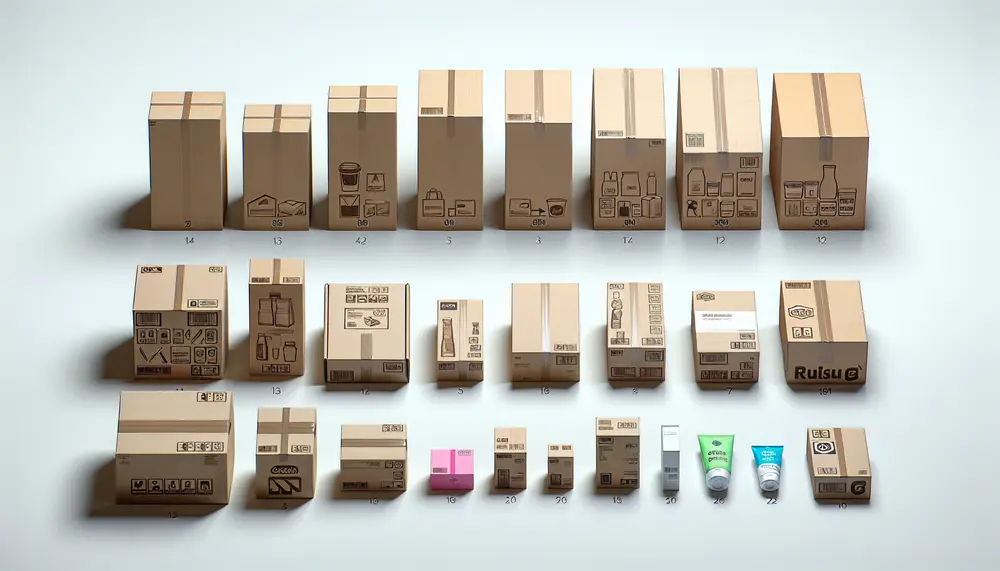Green Packaging
Green Packaging
Green Packaging
Green Packaging refers to the use of materials and processes that are environmentally friendly. It aims to reduce the impact on the planet by using sustainable resources and minimizing waste.
What is Green Packaging?
Green Packaging, also known as sustainable packaging, involves using materials that are biodegradable, recyclable, or reusable. This type of packaging helps to reduce the carbon footprint and promotes a healthier environment.
Why is Green Packaging Important?
Green Packaging is crucial because it helps to reduce pollution and conserve natural resources. By choosing eco-friendly packaging, companies can contribute to a cleaner planet and support sustainability efforts.
Materials Used in Green Packaging
Common materials used in Green Packaging include paper, cardboard, and bioplastics. These materials are often sourced from renewable resources and are designed to break down more easily than traditional plastics.
Benefits of Green Packaging
Green Packaging offers several benefits, including reducing waste, lowering carbon emissions, and improving brand image. Consumers are increasingly looking for products that use sustainable packaging, making it a smart choice for businesses.
Examples of Green Packaging
Examples of Green Packaging include compostable bags, recyclable boxes, and reusable containers. Many companies are now adopting these practices to meet consumer demand and promote environmental responsibility.
Blog Posts with the term: Green Packaging

The Kenyan packaging market is valued at around $585 million, driven by sectors like agriculture and manufacturing which contribute to the GDP; growth in consumer demand has led to innovations such as small affordable packages and a shift towards sustainable...

The Packaging Corporation of America (PCA) is a leader in innovative packaging solutions, enhancing brand recognition and sustainability with advanced designs and materials. PCA's custom-engineered options cater to diverse industries, integrating technology for efficiency and quality assurance while focusing on...

Integrating packaging and product design is essential for brand consistency, user experience, cost efficiency, and sustainability; it enhances consumer perception through visual appeal, functionality, informative content, eco-friendly practices, and technological innovations like smart packaging....

Packaging solutions in New Zealand are essential for product integrity, safe distribution, and brand identity; they must be durable for long transits and increasingly sustainable to meet consumer expectations. Quality packaging is crucial as it protects goods during shipping, enhances...

The packaging industry is governed by a complex legal framework aimed at ensuring safety, health, and environmental protection. Key regulations include material restrictions like RoHS and REACH, compostability standards such as BPI certification, and heavy metal limitations under CONEG legislation. Regulatory...

Sustainable packaging is a comprehensive approach to minimizing environmental impact throughout the lifecycle of packaging, essential for both ecological preservation and meeting consumer demand for green products. Eco-friendly packaging has become a significant factor in purchasing decisions, with consumers willing...

Europe leads in sustainable packaging, integrating eco-friendly materials and methods to reduce environmental impact. This shift is driven by consumer awareness, strict regulations, and a collaborative effort among stakeholders to set global examples for balancing ecology with business growth. The rise...

Sustainable packaging minimizes environmental impact through eco-friendly, efficient, and recyclable materials. It addresses pollution concerns, meets consumer demands for green practices, and provides competitive advantages to companies. The evolution of eco-friendly packaging has progressed from reducing material use to introducing biodegradable...

Packaging plays a crucial role in product success, influencing brand recognition, consumer experience and ensuring safety during transit. It involves understanding the product's specific needs including dimensions, fragility level, weight and transportation process as well as regulatory compliance to protect...

Product packaging is essential for protection, marketing, and providing consumer information; it influences brand perception and purchase decisions through design elements like color schemes. The design process involves research, feedback, prototyping, and technical considerations to ensure functionality and appeal. Choosing packaging...

Food packaging is essential for protecting food, preserving quality, and providing information; it's made from various materials including eco-friendly options and plays a key role in marketing. Current trends focus on convenience, minimalism, antimicrobial properties, and sustainability. Innovative food packaging offers...

Packaging choices significantly affect the environment, contributing to pollution and resource depletion due to non-biodegradable waste and high carbon footprints. The rise of eco-friendly packaging solutions like bioplastics and recycled materials reflects a shift towards sustainability in response to environmental...
Packaging icons, which can be logos, labels or even the shape and color of a package, play an essential role in product marketing by communicating brand values to consumers and differentiating products from competitors. Their evolution over time reflects changing...

The article emphasizes the importance of packaging quality in influencing consumer purchase decisions, protecting products, and enhancing brand image. It discusses establishing comprehensive packaging standards, implementing a quality control checklist, fostering a culture of quality assurance within an organization, incorporating...

Packaging emissions refer to greenhouse gases from the production, transport, and disposal of packaging materials, contributing significantly to global warming. Lifecycle analysis measures these emissions across all stages of a product's life, guiding sustainable decision-making in packaging design....
